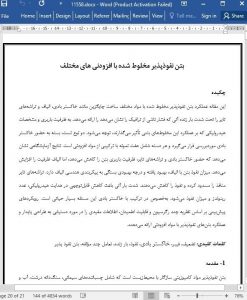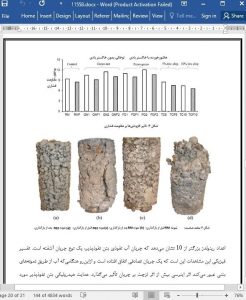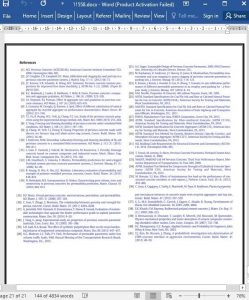Abstract
This paper presents the performance of permeable concrete mixed with various alternative construction materials such as fly ash, fibers, and tire chips subjected to instantaneous live load intensity representing traffic-induced distress. Attention is paid to load-bearing capacity and hydraulic characteristics that affect the functionality of these concrete mixtures. Two test categories are examined depending upon the presence of fly ash and each category encompasses seven specimens with a combination of the admixture materials. Experimental results show that the inclusion of fly ash and tire chips decreases the load-carrying capacity of the permeable concrete, whereas that of fibers increases the capacity. The infiltration rate of the concrete is improved by the fibers and the degree of improvement is reliant upon their geometric configurations. Tire chips tend to clog pores and decreases infiltration. The instantaneous load intensity causes significant degradation in hydraulic conductivity, Reynolds number, and infiltration rate; particularly critical when mixed with fly ash. Predictive approaches based on multiple-regression and reliability theory provide useful information on achieving the sustainable design and practice of permeable concrete with the admixtures.
1. Introduction
Permeable concrete is an environmentally friendly composite material consisting of cementitious binders, coarse aggregates, water, and other admixtures. Use of permeable concrete is rapidly increasing because of several advantages such as storm-water management, reduced tire-induced pavement noise, and pollutant control [1]. A number of factors influence the performance of permeable concrete installed on site, including the retention of sand-sized particles [2], mixture designs [3], aggregate gradation [4,5], use of recycled aggregate [6], design approaches [7], and service environment such as freeze-thaw [3,8]. Taking into account economic aspects, residual materials such as fly ash or slag are often considered when designing pervious concrete mixtures [9] and their durability has been studied [10].
6. Summary and conclusions
This paper has dealt with various permeable concrete mixtures having alternative construction materials subjected to instantaneous live load intensity ranging from 0% to 75% of the control strength. Specimens were classified into two groups depending upon the presence of fly ash and each group had seven cylinders mixed with nonmetallic fibers and tire chips. Experimental results characterized the performance of these permeable concrete mixtures in terms of loadbearing capacity and hydraulic properties such as infiltration, Reynolds numbers, and hydraulic conductivity. A predictive approach was present based on multiple-regression and reliability theory. The following conclusions are drawn:
• The presence of fly ash decreased the compressive strength of the permeable concrete relative to the test category without fly ash. The specimens mixed with the fibers exhibited improved strength and their geometric configuration affected the extent of strength increase. The specimens including tire chips showed a decreased strength because of their elastic softening nature and premature disintegration from the cementitious binders.











